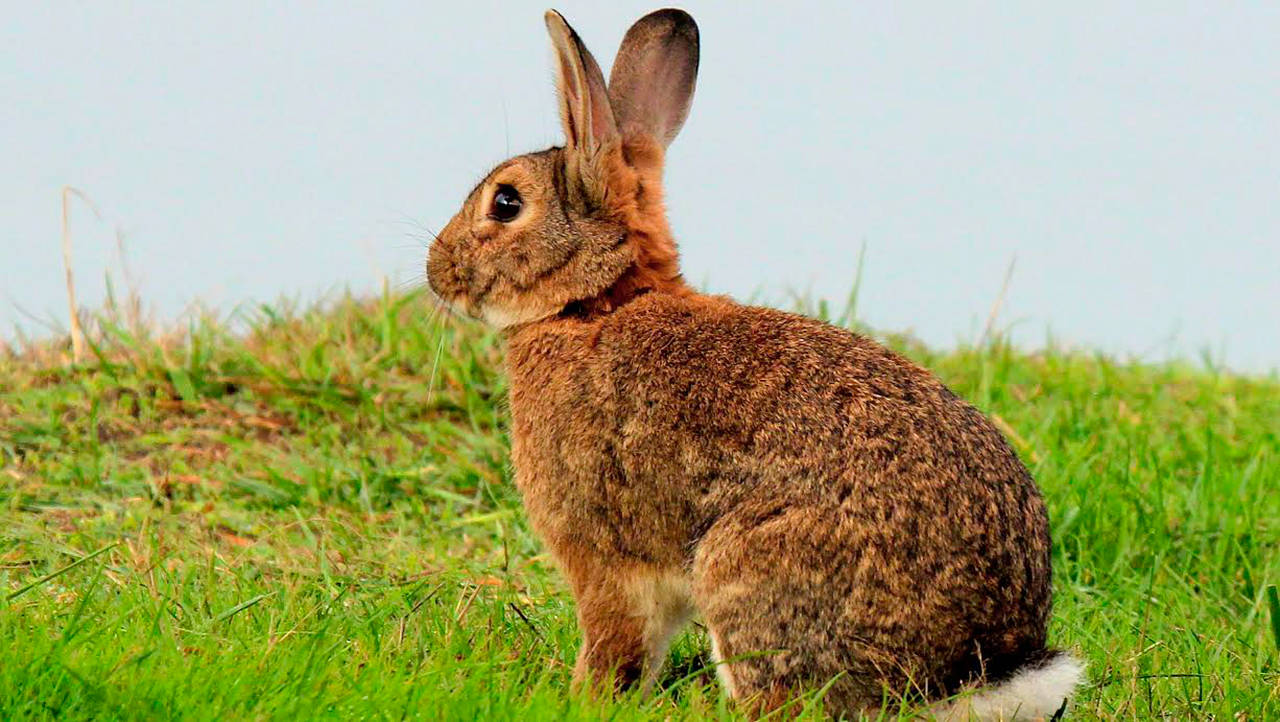The bunnies of the San Juan Islands are in danger. Rabbit hemorrhagic disease is spreading across Canada’s Vancouver Island and has even made its way to Richmond, British Columbia, south of the city of Vancouver, and it may be headed to the islands.
“To the best of our knowledge, it only causes death in European rabbits, Oryctolagus cuniculus, which is the species that was introduced into the San Juan Islands. It seems to spread easily, and I wouldn’t be surprised if it moved from Vancouver Island into the San Juans,” said SeaDoc Society Science Director Joe Gaydos, VMD, Ph.D. “From an ecosystem perspective, this virus could really knock back the introduced population of European rabbits in the islands, permitting recovery of soils and native plants that rabbits can decimate. From the pet rabbit owner or rabbit farmer’s perspective, this is a scary disease.”
According to The Center for Food Security and Public Health at Iowa State University, RHD is a highly contagious viral disease found in both domestic and wild rabbits. Once the virus strikes a population, most – if not all – rabbits exposed to the virus will die. The first known outbreak was documented in 1984 and spread through Angora rabbits in China imported from Europe. After nine months, the disease killed a total of 14 million domestic rabbits. The virus is not harmful to humans.
On April 12, Canada’s CBC News reported that 66 rabbits housed at a no-kill animal shelter in Richmond, British Columbia, were euthanized because the disease spread to it via two feral rabbits that died on the property.
A representative of the shelter told CBC that the facility had quarantined the rabbits and ordered the RHD vaccine – which is illegal in the United States – but the vaccine did not arrive in time. The representative added that since one rabbit tested positive for the disease, all of the rabbits likely had it. All of the cages and infrastructure used to shelter the rabbits were incinerated and will have to be replaced.
“[The] biggest way to protect [them] is to keep rabbits contained and off the ground and not feed them anything from the garden at the moment. … If it is found in the United States, then any herd or animal testing positive will be destroyed as that is the U.S. procedure on something like this,” Bill Pongo, rabbit and cavy leader for Orcas Fur and Feathers 4-H group said. “If someone suspects an animal has died from it, they are to contact their vet and get instruction. It is a mandatory reporting as [a] state vet has to run the tests, but the local vet is supposed to be able to handle the carcass.”
Nonnative, domestic European rabbits were introduced to the San Juan Islands more than a century ago.
“About the year 1900, a lighthouse keeper bought a few so-called Belgian hares, with the idea of supplementing his meager income through meat sales to the Seattle markets,” wrote Leo King Couch in a November 1929 publication of the Journal of Mammalogy. “Subsequently, at four-year intervals, Black Flemish and New Zealand breeds were introduced to prevent inbreeding.”
In 1924, the rabbit population on some islands was so large that they were causing negative impacts on the environment. Hunting was out of the question due to the rabbits’ poor health, Couch wrote, so it was decided that apples laced with strychnine alkaloid, warrens fumigated with calcium cyanide and burrows filled with moisture-liberated cyanogen – a suffocating gas – would be used to thin the herd.
“As a result of the poisoning operations, 621 rabbits were picked up, and it was estimated that twice that number were killed with cyanide in the burrows,” Couch wrote. “After eight days there were few rabbits left, and these appeared extremely wild.”
Islands to the north and west of San Juan Island, noted Couch, already had established rabbit populations that were suspected to have been introduced by the Hudson’s Bay Company in the late 1800s.
“[RHD has a] short incubation but no signs or symptoms [occur] up until death. It can be carried by flies and mosquitos and even in bird-of-prey excrement,” said Pongo. “It’s bunny season, and our rabbits on the islands are all considered feral, and so if someone finds a baby, it’s best to leave it be, and don’t touch.”



